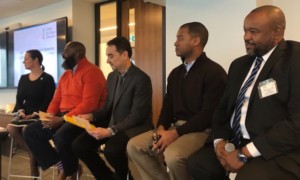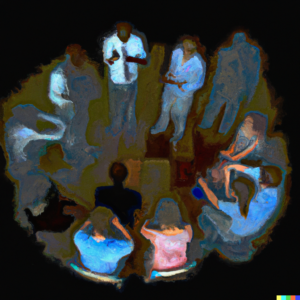Smart Review | Courageous Conversations About Race

Every February many schools around the country spend a month celebrating Black History Month. There are 28, or 29, days spent on what the History Channel describes as, “honoring the triumphs and struggles of African Americans throughout U.S. history, including the civil rights movement and their artistic, cultural and political achievements.” Once the month is over, some may check it off the list of “to-do’s” and wait until the month comes around next year to plan out learning activities. I often wonder, are there truly authentic conversations about not only history but race, happening during this timeframe? And, not just during this designated month but throughout the whole year? As we close out this Black History Month, it’s a fitting time to really have an honest, reflective, and meaningful conversation about race.
 In the forward to Glenn Singelton’s second edition book, Courageous Conversations About Race: A Field Guide for Achieving Equity in Schools renowned scholar and professor, Gloria Ladson-Billings states: “We are deeply divided by race, and race remains the topic around which we still cannot have open, honest, courageous conversations.” While these conversations are seemingly difficult in most spaces, it becomes even more complex at times in school settings. Fortunately, Singelton’s Conversations About Race offers a practical guide for getting these conversations started. He describes the book as providing, “a foundation for those educational leaders at the systems and school level who are willing and ready to begin or accelerate their journey toward educational equity and excellence for all children.” On the layout, Singelton notes, “as you progress through each chapter, you will be prompted to reflect on your learning, and in particular, your own racial issues that impact student achievement. As you progress through each chapter, you will be prompted to reflect on your own learning and in, particular your own racial experience. At the end of each chapter, you will find implementation activities that you can use with your colleagues to lead them in discussing the impact of race in the classroom.”
In the forward to Glenn Singelton’s second edition book, Courageous Conversations About Race: A Field Guide for Achieving Equity in Schools renowned scholar and professor, Gloria Ladson-Billings states: “We are deeply divided by race, and race remains the topic around which we still cannot have open, honest, courageous conversations.” While these conversations are seemingly difficult in most spaces, it becomes even more complex at times in school settings. Fortunately, Singelton’s Conversations About Race offers a practical guide for getting these conversations started. He describes the book as providing, “a foundation for those educational leaders at the systems and school level who are willing and ready to begin or accelerate their journey toward educational equity and excellence for all children.” On the layout, Singelton notes, “as you progress through each chapter, you will be prompted to reflect on your learning, and in particular, your own racial issues that impact student achievement. As you progress through each chapter, you will be prompted to reflect on your own learning and in, particular your own racial experience. At the end of each chapter, you will find implementation activities that you can use with your colleagues to lead them in discussing the impact of race in the classroom.”
Digging into Courageous Conversations
There are three parts to the book which are organized under the themes: passion, practice, and persistence and how they relate to racial equity leadership. The book truly functions as a field guide with embedded reflection prompts, implementation exercises and QR codes which link to videos. The highlights mentioned below are just a sampling of some of the thought-provoking content that can be found in the book:
Part One – Passion: An Essential Characteristic of Racial Equity Leadership. This section of the book “explores the landscape of education reform and exposes the issue of race as a phenomenon that affects the lives and learning of all children.” It is in this section where the reader starts to get grounded in understanding race in education, the impact of institutionalized racism, and how to start having honest conversations about race.
A powerful exercise within this section is a reflection on equity terms. In a mix of personal, small group, and whole group conversations, individuals will be asked to examine their initial understanding and new understanding (after reading) of the terms: racism, institutionalized racism, equity, anti-racism, and leadership for racial equity. The book walks the reader through the exercise norms and provides workspace for responses.
Part Two – Practice: The Foundation of Racial Equity Leadership. In this section, the reader goes on “a step-by-step journey into the race conversation, providing the language, markers, tools, and insights necessary to being and stay in the dialogue.”
While this section contains many helpful reflection prompts and implementation exercises, one of my favorites is Singelton’s reintroduction of a reflective tool which was first shared in the first edition of the book. He states, “I developed the Courageous Conversations Compass as a personal navigational tool…that guides educators through conversations about race. It helps participants to know where they are personally as well as to understand the place from which others’ contributions come; the result is an expansion and deepening of beliefs and opinions for all participants.” The compass is used as a way to think about how you process racial information, events or issues and how it can be used to guide interracial dialogues about race.

Part Three – Persistence: The Key to Racial Equity Leadership. This is where the reader begins to take action to apply what has been laid out in the book. “Part Three provides specific strategies for teachers, schools, and districts to use in the implementation for systemic racial equity transformation, including organizational ideas that help teachers develop better ways to teach and help school leaders to embrace the communities they serve.” Turn to chapter 12, in particular, for strategies on how to achieve equity within your own setting. One recommendation Singelton makes is to develop equity teams, which he refers to as “E-Team”. The E-Team is comprised of members from various departments and/or grade levels and it is their responsibility to:
- “Engage in a process of investigation to discover how race impacts their personal and professional beliefs and behaviors.
- Lead the school or central office staff in the examination of individual and institutional culture as it relates to equity and anti-racism.
- Establish a professional learning community in which adults can effectively develop skills and knowledge necessary to improve student performance and eliminate racial achievement disparities.”
Getting Started
Not sure if you should pick up a copy of the book? Consider this snippet of a poem by a high school student, Pablo Vega, who Singelton quotes in the book:
Think about your response to Pablo’s questions. How we respond reminds us that we all need to have courageous conversations about race.
It should be noted that before discussing this book as a school, or even in a small group setting, the culture of creating a safe space for honest, and courageous, conversations must be a part of the norm. If the culture is one where people are not respectful, cannot voice their opinions and be heard, and are unable to have healthy debates, initial work should be done to first build a positive culture before diving into the important topic of race.
For more, see:
- Creating a More Inclusive School Community Starts With Intentional Support for Teachers
- MLK on Education, Race, and Nonviolence
- Making The Case for Diversity, Equity and Inclusion
Stay in-the-know with innovations in learning by signing up for the weekly Smart Update.
Courageous Conversations About Race: A Field Guide for Achieving Equity in Schools was sent to the author at no cost for an optional review. If you’d like to submit your product for consideration of a review, please email[email protected].






0 Comments
Leave a Comment
Your email address will not be published. All fields are required.